#Advent Candle liturgy
Explore tagged Tumblr posts
Text
Advent Candles Narrative Lectionary Year 2
Promise of the Messiah HopeJeremiah 33:[10-11], 14-18Mark 8:27-29Jesus there is hope in every promise of peaceHoly Spirit there is hope in every act of loveGod there is hope in every shout of joyHere, we light this candle, reaching for hopeWe hear the promise, and reach for it, even when we cannot believe itPlant the seeds of Jesse, to grow here today, we pray. Taize Option (always fun to sing…
View On WordPress
0 notes
Text
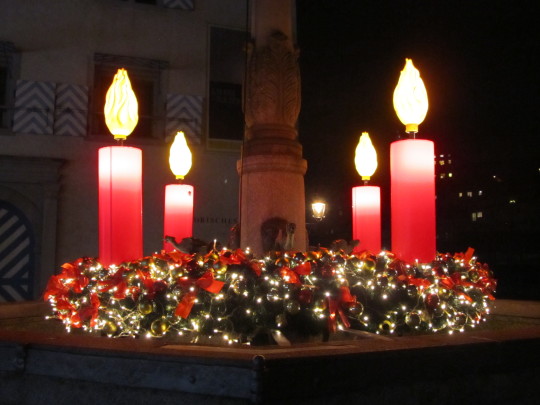
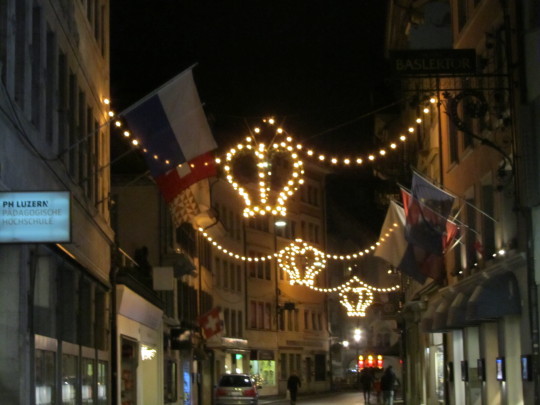


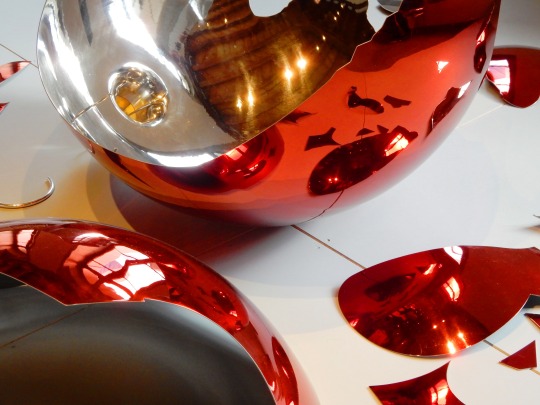
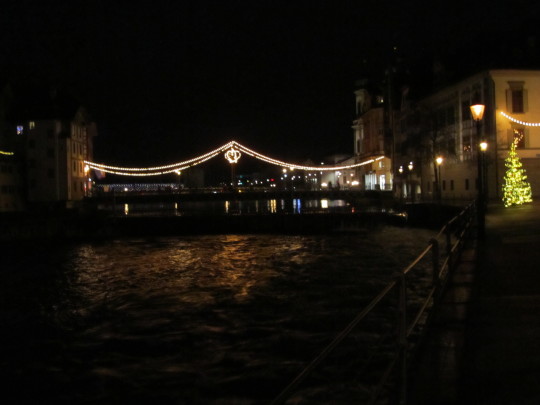


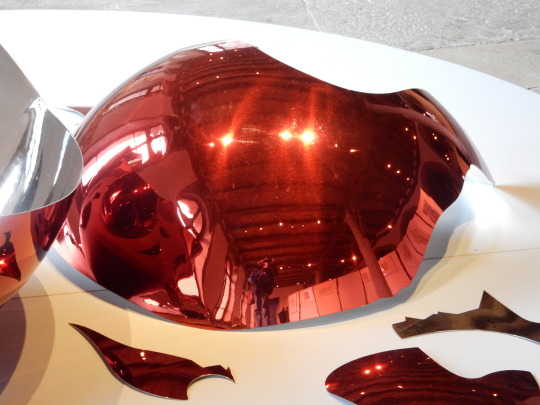
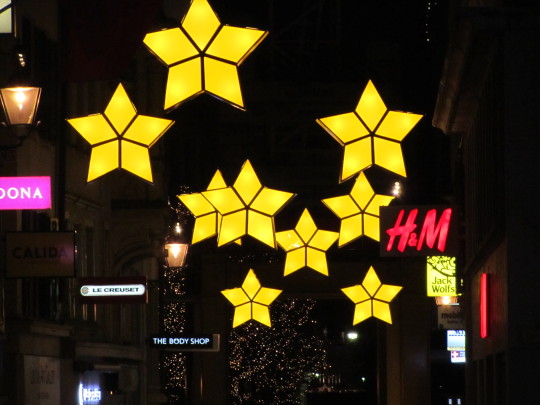



Christmas Eve
Here the Christchindli (the child Jesus) brings the presents on Christmas Eve. And, thankfully, you open all your presents on Christmas Eve, too!
Christmas Eve takes place on December 24 and is probably one of the best nights of the year! Christmas has the power to reunite families and friends, warm up our hearts, and remind us that we have so many things to be thankful for. So put on your cozy PJs, light up your fireplace, call your loved ones, and top off your hot cocoa with some fluffy marshmallows!
When is Christmas Eve 2023?
Christmas Eve is on December 24 and marks the culmination of the Advent period before Christmas that starts on the fourth Sunday before Christmas Eve. Many churches mark the end of Advent with midnight church services. During modern times, it is popularly celebrated on the night before Christmas Day.
History of Christmas Eve
The tradition of celebrating Christmas Eve derives partly from Christan liturgy starting at sunset, which is inherited from Jewish tradition and based on the Book of Genesis’s Story of Creation, saying the first day starts in the evening and ends in the morning. It is also believed that Jesus, or Jesus of Nazareth, was born at midnight in the region of Palestine. Many historical conceptions on ancient traditions contributed to the development of eve celebrations, which persisted in the early Christian calendar.
Christmas Eve marks the end of the Advent season, the period of preparation for Christmas, which begins on November 30, or November 15 in the East. It was on this night that the shepherds keeping watch over their flocks outside Bethlehem saw the bright star in the sky that signaled the birth of Jesus Christ. This is why many churches have services beginning on the fourth Sunday before Christmas. From the 12th to the 15th century, due to the Holy Inquisition, Christian traditions were made mandatory. During the 16th century, the church was influenced by the Winter Solstice celebrations and began Christmas preparations the night prior.
In many parts of Europe, people believe that at midnight on Christmas Eve, animals briefly possess the power of speech. It might have been the traditional association of the ox and the donkey in the Nativity scene that gave rise to such superstitions, but the concept of talking animals is probably pagan in origin. A closely related belief, widespread in England and Europe, is that cattle rise in their stalls at midnight on Christmas Eve, or kneel to worship the Christ child.
Despite its Christian significance, there are a number of pagan and supernatural beliefs connected with Christmas Eve. In Scandinavian countries, it is believed that the dead revisit their former homes on Christmas Eve. People make sure that their parlors are tidy and that a good fire is burning before they go to bed. They often light candles, set the table, and leave out plenty of food for their ghostly visitors. They also make sure that the seats of their chairs have been dusted. When they get up in the morning, they wipe the chairs again with a clean white towel. If they find any dirt on the seat, it means that a relative fresh from the grave sat there during the night.
Celebrating Christmas as a holiday became popular in the 19th century. Christmas Eve remains an important part of Christian culture and signifies the birth of Jesus. It has become even more popular within the last century thanks to a beloved icon: Santa Claus. The idea of the jolly man in red gave rise to more traditions such as hanging stockings and leaving out cookies, milk, and sometimes carrots for his reindeer.
Apart from Santa Claus and Christianity, Christmas Eve took on another significance — it also became a day made for spending time with family and loved ones over dinner, decorating, gift wrapping, and Christmas-themed movies. The holiday unites families and friends, allowing them to get together and enjoy special and traditional activities, from Europe, North- and Latin America, to Asia.
Christmas Eve timeline
1818
Christmas Eve Anthem
The Christmas carol 'Silent Night' is performed for the first time in public in the Austrian village of Oberndorf on Christmas Eve at a midnight mass in the Saint Nicholas Church.
1914
The Christmas Truce
In World War I, as a manifestation of the Christmas spirit, French, German, and British troops lay down their arms, and soldiers initiate a ceasefire, sharing cigarettes and whiskey.
1969
Christmas Eve with the Moon
Astronauts on the Apollo 8 mission become the first humans to orbit the Moon, it is broadcasted live on Christmas Eve.
2016
World's Largest Santa
The world's largest Santa, measuring 21.08 m (69.16 ft.) tall, 9.18 m (30.12 ft.) wide and 12.62 m (41.4 ft.) deep, goes on display in the Municipality of Águeda in Portugal.
Christmas Eve Traditions
On the night of Christmas Eve, children around the world leave food and a drink for whoever comes to their house and brings them presents. Who this is depends on what part of the world you live in. It might be Santa Claus or Father Christmas who delivers the presents. In Switzerland, it’s the Christchindli (Christchild). In Denmark, it’s the Christmas elf. In Sweden, it’s a small man. And in Finland, it’s the Christmas goat!
In Latvia, the custom is that you can open the presents under the Christmas tree after the Christmas Eve dinner, with a slight twist — before the gift is accepted, the person receiving it has to recite a small poem.
Christmas Eve By the Numbers
32.8 million – the number of real Christmas trees sold in America during the year 2018.
49% – nearly half of Americans don’t buy Christmas decorations, according to a Statista survey.
46% – fortunately, nearly half of Americans don’t mind lying to protect their loved ones’ feelings when they don’t like a gift.
$1,496 – the average spent by U.S. households during the Christmas holidays in 2019, down from 2018.
22% – the amount of Americans that believe their Christmas spending will leave them in debt.
1 billion – the approximate number of cookies Santa gets around the world on Christmas Eve.
500 million – the number of glasses of milk left out worldwide on Christmas Eve, since Santa needs something to wash his cookies down.
1,800 miles – the speed Santa travels per second if we assume that he has to travel 316899308.041 miles on Christmas Eve and that he has 32 hours to do it.
500 million – the estimated amount of households that Santa has to leave presents at.
8.4 years – the overall age children stop believing in Santa across the United States.
Christmas Eve FAQs
What do you do on Christmas Eve?
On Christmas Eve, many families get together to enjoy a big family dinner. When children are asleep, parents and grandparents sneakily put presents under the tree from Santa.
What time is Christmas Eve?
Originally, Christmas Eve was celebrated on the night before Christmas, however, over time, it has become a full-day affair.
Why is it called Christmas Eve?
The word ‘eve’ means the day or period of time before an occasion or event. So Christmas Eve literally means ‘the day before Christmas.’
Christmas Eve Activities
Dinner time! No matter your obligations for the night, where you are, or who you are spending it with, take the time to have dinner with the people close to you. Prepare some food or order it, have some desserts, and enjoy the conversation and the company!
Secret Santa/secret friend: Many countries share the tradition of giving and receiving gifts, and though it’s usually saved for Christmas Day, Secret Santas are great for Christmas Eve. Organize a Secret Santa with your friends and spread the Christmas spirit.
Keep and create traditions: From cooking your favorite childhood Christmas dish and making eggnog to hosting an annual movie night with your friends, the Christmas season is the perfect time to start a new tradition.
5 MIND-BLOWING FACTS ABOUT CHRISTMAS EVE
The fastest delivery man: Scientists calculated that Santa has to travel at 650 miles a second to do all his work on Christmas Eve.
Merry scary: A popular tradition in the past century was to sit around and tell scary ghost stories on Christmas Eve.
The Christ candle: On Christmas Eve, the Christ candle in the center of the Advent wreath is traditionally lit in many church services.
The Nativity scene: It is a tradition of Christians to recreate the Nativity scene, including live dramatizations.
Presents come earlier: In some countries, like Switzerland, Australia, Germany, Portland, and some places in Latin America, presents are exchanged and opened on Christmas Eve rather than at Christmas.
Why We Love Christmas Eve
Light even in the darkest times: For Christians, Christmas is the reminder that God loves humanity so much that he sent his Son to save them and forgive their sins. So even in the darkest time, and just as in World War I, Christmas Eve is the night that lights up the world.
Reunion night: Even people who aren’t religious celebrate Christmas and take the time to go home to spend time with family and see friends they haven’t seen all year.
An opportunity to give love: Beyond any commercial and material reason, Christmas Eve is the perfect night to give and receive love. Some loving and kind gifts include your company, your support, food for homeless animals, donations to organizations and churches, and more.
Source
#nativity scene#Krippe#Adventskranz#advent wreath#Luzern#Lucerne#Schweiz#Switzerland#we're celebrating on Christmas Eve#we get the presents on Christmas Eve too#24 December#Christmas tree#original photography#night shot#illuminated#Christmas lights#architecture#tourist attraction#landmark#Rathaus#River Reuss#old town#Zeughausbrunnen from 1547#fountain#Christmas Eve#Heiliger Abend#Christchindli#ChristmasEve#cityscape
10 notes
·
View notes
Text
HOMILY for 34th Sat per annum (II)
Apoc 22:1-7; Ps 94; Luke 21:34-36

The Church has its own liturgical rhythm and pace, and so, even as the world seems to gear up for Christmas and the new year, the Church’s Liturgy strikes a different tone as we stand on the cusp of Advent – she calls us to slow down and be watchful. As Jesus says in the Gospel, “watch yourselves” or, looking to a different translation, “take heed to yourselves.”
The sense is that we should look after ourselves, indeed, we should be watchful of our own hearts and be careful not to let our hearts be “coarsened.” For a coarsened heart, weighed down or panicked by temporal cares, and so seeking to escape from life’s worries through drunkenness and other sensual pleasures, is a heart that becomes less sensitive to God; we become less open to the many opportunities to receive his graces; less attuned to his coming among us, and indeed we’re do not notice God’s Presence in our lives.
Christ the divine Physician, therefore, is our cardiologist, who counsels us to watch ourselves, to guard our hearts, by seeking refuge in his Sacred Heart. Thus he calls on us to stay awake and pray at all times. Prayer, therefore, is not an after thought or a desperate measure, not something that we squeeze in between the other pressing engagements or the more entertaining pursuits that consume our time and capture our hearts. Rather, prayer is necessary for our spiritual health, like the exercise the cardiologist recommends, and so the Church’s Liturgy calls us to slow down, to retreat from the world’s demands, and to pray. We’re called to be like St John the Beloved Disciple, who leaned against the breast of the Lord, and so let the heartbeat of Jesus set the pace for our lives. For this is what prayer does to us.
As Pope Benedict XVI said in a letter he wrote to seminarians, but which applies to every one of us: “When the Lord tells us to “pray constantly”, he is obviously not asking us to recite endless prayers, but urging us never to lose our inner closeness to God. Praying means growing in this intimacy. So it is important that our day should begin and end with prayer; that we listen to God as the Scriptures are read; that we share with him our desires and our hopes, our joys and our troubles, our failures and our thanks for all his blessings, and thus keep him ever before us as the point of reference for our lives.” These words seem to me good advice at the close of another liturgical year, calling us to centre ourselves around the Lord, even as St John saw him enthroned at the centre of the heavenly city, and so from Christ flows life, and healing, and fruitfulness. We are called to become that city, with Christ enthroned in the centre, and his light illuminating our minds and our actions. Our daily prayer, therefore, is Maranatha; Come, Lord Jesus! Come, and be the centre of my life.
As always, our model in prayer and discipleship is the Blessed Virgin Mary, to whom the Lord Jesus came so perfectly and uniquely when she said to the angel, Fiat mihi secundum Verbum tuum. And so, on this final day of the liturgical year, we look to Our Lady. For it is from Mary that we learn to take heed of ourselves and to guard our hearts; to refine our motivations and desires; and to turn to God so that his light might shine upon us.
Fittingly, therefore, next Saturday as Advent begins, we shall observe the devotions and reparation asked of us by Our Lady of the Rosary at Fatima. Here in the Rosary Shrine we do this every first Saturday of the month throughout the year, with prayer and meditation before the Blessed Sacrament, pondering the Word of God in silence, examining our hearts and going to Confession, receiving Communion in reparation for sins against the Immaculate Heart of Mary, and then praying the Rosary together in the monthly Rosary procession as we carry blessed candles. These acts of reparation and prayer, prescribed by Our Lady, are intended to repair those hearts that have been coarsened; to attune us to God’s grace which convicts us of sin and converts us; and to fill us with the Presence of God through a worthy and well-prepared reception of the Sacraments.
Through the first Saturday devotions, we respond to the words of Christ in today’s Gospel: “Stay awake, praying at all times for the strength to survive all that is going to happen, and to stand with confidence before the Son of Man.” As ever, our Blessed Mother shows us the way to obey the Lord, and she leads us into a deeper intimacy with him.
10 notes
·
View notes
Text
am i a christian?
i went to sunday school, i sang in the choir, i helped count the offertory, joined the choir when invited to sing the Hallelujah chorus during Easter, lit the advent candles when my family was invited to be the ones to do so one Advent Sunday, and read the liturgy when the old ladies decided that there hadn't been a kid doing a reading in a while. i didn't take that seriously that there was a metaphysical God, whose interventions in the material realm could be determined and known, but I was still an usher boy, and I was happy to light the candles and help the passing of the collection plates
it should be obvious from the above that i was neither jewish nor muslim as a child. why? is my Christianity or atheism or agnosticism etc. as easily decided? are they decidable questions?
now, i do not go to church services. i have not been to one in about five years. it isn't because i dislike participating in the call to worship, or in the hymns, or in the prayers, or in the readings, but largely because I don't know a preacher who I'd bother going to the sermons of. i still do not believe in god.
is the question of "Is Mourning Again a Christian?" decidable from that?
i still sing hymns, i still look up their performances on youtube and spotify, i still occasionally read the Gospels or OT to try to figure out what they mean, and what their meanings can be used to help with in my current life.
does this call into question my atheism, or my non-Christianity?
final questions, for those who think they got the answers to every previous question correct: am I trans? is this decidable? how do you know that I am trans? what would it take for me to stop being trans, in your mind? if i said that i "identified" as a man, would that mean that I cannot be trans, given my ASAB? i at one point identified and was identified as a man, and then identified and was identified as as woman, then would i be trans? would transness necessarily follow?
5 notes
·
View notes
Text
December 17, 2023
December 17, 2023
Third Sunday of Advent
Isaiah 61: 1-2a,10-11
The prophet calls the people to rejoice because they have returned to their home from exile.
Psalm Luke 1: 46-54
The liturgy choses Mary’s Magnificat as the response to the first reading.
Paul’s letter to the Thessalonians 5: 16-24
Paul invites the church to rejoice and to pray and be thankful for all God has done for them.
John 1: 6-8, 19-28
Early in John’s Gospel, the prophet Isaiah is quoted by John the Baptist who is called to prepare the way for the Christ.
In many churches pink vestments are worn today and the third candle of the Advent wreath which is pink, is lighted. This Sunday is called Gaudete Sunday. Rejoicing. And Isaiah speaks of rejoicing as does Mary in the response for today. We rejoice because we are coming closer to the Incarnation. God is taking on our human flesh.
John’s Gospel launches quickly into the ministry of John the Baptist, and his call to prepare the way for the coming Messiah. We hear John’s response to the religious leaders. He was a concern for them because he was attracting a large following. Did they fear they were losing power to this itinerate preacher? They asked him, “Who are you?” John responds using the words of the prophet Isaiah. “I am the voice of one crying in the desert, make straight the way of the Lord.” He understood his call.
John the Baptist is such a model for people in leadership these days. He understands his role. He is not captivated by large crowds, power, and remains focused on his commitment to prepare the way for the Lord. His style is very different from his cousin Jesus ’style. People come to him in the wilderness to repent and to be baptized. Jesus goes from the wilderness to the people. John is a man committed to the truth for which he was martyred. He does not act like a special person because of the crowds he attracts, but remains focused on his call.
Sadly today, many leaders remain focused on themselves and choose directions that enhance their power. John stated, “One is coming after me, whose sandal strap I am not worthy to untie.” John is an example of truth telling which in many ways, is in short supply these days.
In our second reading, Paul is asking something similar of all of us. John is pointing to Jesus and Paul invites the early church to be “preserved blameless for the coming of our Lord Jesus Christ.” Here is speaking of a future coming.
Advent is coming to a close in a little over a week. Has it been a peaceful season for you? Have you found things in your life that help you to rejoice? And, who are the John the Baptists in our personal lives that continue to point us to Jesus and his message?
Today, Mary offers all of us the main reason for our rejoicing. “My spirit rejoices in God my savior. The Almighty has done great things for me.”
1 note
·
View note
Text
Regnbuebønn og 7 uker I fastentid – Rainbow prayer or 7 weeks in lent – Regenbogene-Gebet oder 7 Wochne Passionszeit
Fagerborg Kirke is a nearby church. So, lets see how worship is there.
It’s a fairly new thing for me, to have to calculate the way to church, in order to go to Sunday-worship. Normally, I step out of the building and have either 10 m to cross and reach the sacristy, or 50 m to walk to the main entrance. And with all the snow, it is particularly important to pay attention as to where you step and even more so, how you step. Use the flat of your feet, not the heel, I was told not 1 week ago…
So, with the last chime, I enter the church and am greeted by the silver boys (the boy’s choir), the baptism-family, the catechist, the priest and other members, who will participate in leading the service.
I get a hymnal and try to find a free spot. Just imagine, in this quite big church, all the pews are in use! People do keep a little distance, but still… Anyway, on one of the 2 monitors up front, I can see, what’s happening – liturgy-wise – right now. That means, someone must be in charge of the computer… I am quite impressed!
Sitting on my spot in the pews, I find myself in a fairly traditional service. And then again, surprising things happen. I had already seen the candles in rainbow colors, during my visit of the drop-in bibelgruppe. Now I was about to discover, what they are for:
Since a couple of years Den norske Kirke implemented the lightning of candles also during lent – like we do in advent. During Lent 7 candles in rainbow colors are used. Each week has a specific color and a specific theme. God gave Noah (and us) a token of reconciliation, as he set the rainbow in the sky. The rainbow is a sign of hope, a sign for new beginnings, which are not always easy. Since this is at the core of diaconal acting., therefore Kirkens Nødhjelp instated the rainbow prayer as a frame for the seven weeks of lent: Red week – love; Orange week – change; Yellow week – justice; Green week – hope; Blue week – water; Indigo week – community; Violet week – the silent week (we focus on Jesus Christ and pray, that we may be Gods hands and feet on earth. Each week also has a specific line of projects of the missionary work of the Norwegian church in mind.
0 notes
Text
Choosing the Right Church Products
Church products such as altar boy robes, candle stands, and banners are an important part of the liturgical environment and can help to create a sense of beauty, reverence, and holiness. Choosing the right church products helps create an environment conducive to worship, and that helps enhance the spiritual devotion of the worshippers.
How to choose altar boy robes?
When choosing altar boy robes for the Orthodox Church, look for a fabric that is comfortable to wear and that has natural rayon lining and velvet inserts. Make sure the robes reflect the honor of serving in the church by opting for rayon and metallic brocade. Some suppliers offer different decoration options – standard, premium, and luxury – based on their personal preferences, budget, and needs. The standard styles include inexpensive galloon and non-embroidered or lightly embroidered crosses, the premium styles feature high-quality galloon and beautifully embroidered crosses, and the luxury styles feature solid jacquard galloons and intricate hand embroidery.
How to choose church candle stands?
In the Orthodox church, one can find floor candle stands placed at icons, altar candle stands or candelabras placed on or near the holy table during the Divine Liturgy, processional candle holders carried by altar servers during key parts of the service, and special candle holders used by Bishops to bless the people. When choosing candle stands for churches, consider factors such as size and capacity, material and durability, style and design, and safety and maintenance. Make sure the stands are large enough to hold the number of candles needed and are made of a durable material like brass that can withstand frequent use.

How to choose church banners?
Church banners are beautifully embroidered and finely woven and depict ancient stories, carry special messages, and celebrate the arrival of important liturgical seasons such as Advent, Pascha, etc. In addition to traditional designs, online church supply catalogues also offer banners with intricate embroidery, fabric imprints, gold-gilding, and hand-made designs, each exuding elegance and professionalism. Make sure the banner is the right size and shape for the designated space and fits within your budget.
0 notes
Photo

#SpiritualSunday: Advent Season of “Advent” (PART 3) The modern Advent wreath has four candles. The first two and the fourth are purple, Advent’s traditional color. The third candle is pink, representing the halfway point of Advent and the joy of the coming holiday. Christians traditionally pray, sing, and light an additional candle on each Advent Sunday until all of the candles are lit on the fourth Sunday. A fifth, white candle known as the Christ candle sometimes sits unlit in the center of the wreath; it is only lit on Christmas Eve. The liturgy of Advent remained unchanged until the Second Vatican Council introduced minor changes, differentiating the spirit of Lent from that of Advent, emphasising Advent as a season of hope for Christ's coming now as a promise of his Second Coming. ** The Roman Catholic Church retains the traditional violet & Pink Candles. Blue is not generally used in Latin Catholicism, and where it does regionally, it has nothing to do with Advent specifically, but with veneration of the Blessed Virgin. However, on some occasions that are heavily associated with Advent, such as the Rorate Mass (but not on Sundays), white is used. During the Nativity Fast, red is used by Eastern Christianity, although gold is an alternative colour. (at St. Raphael the Archangel Parish - Legazpi City) https://www.instagram.com/p/Cldx4YqyiKJ/?igshid=NGJjMDIxMWI=
0 notes
Text
I've seen clergy on social media and in books talk about one of the more unfortunate things about being a pastor/priest: people in the congregation who nitpick at the way they do the liturgy constantly.
And like--Anglicans/Episcopalians do make a big deal of liturgy. We're a liturgical tradition. We have books of common prayer, it's literally the thing that unifies us! We're not a "confessional" denomination*, the Episcopal church is united not necessarily by a uniformity of belief but by our liturgies--aka the way we do our services. I could walk into any church in the Anglican Communion worldwide and the service would go in the same general order with the same general elements, and every church in the Communion uses the same readings from the Bible each Sunday from a shared lectionary**.
But even within the Book of Common Prayer there's sooooo many ways you can do a church service. A lot of things can be made more or less complicated, more traditional or less. Some things can be prayed as a group, some things can be sung or chanted.
Anyway.
While in North Carolina, I've gone to a local church here twice--once for a "lessons and carols" service, and the Christmas Eve service, which is closer to a "normal" Sunday service, with readings and the Eucharist.
The church here is, uh, not nearly as ...progressive? as my church at home. And admittedly my church at home is like, smack-dab in one of the most leftist/liberal neighborhoods of the most leftist/liberal cities in the USA. Whereas the one here is like, one of a tiny number of churches that aren't some kind of Baptist or Pentecostal or non-denominational. (So, so many kinds of Baptist.) It's the one Episcopal Church, the one ELCA (the liberal Lutherans), and that's it. No UCC, no Disciples of Christ, definitely no Unitarian Universalists. This is one of the most liberal churches in this town: they have a women rector, and the parking lot was the only place I saw a Biden sticker.
ANYWAY, still not my point, pfft.
The point is: Daci was kind enough to go to church with me instead of just driving me there, and said that during the Christmas Eve service I kept putting out Disapproving Vibes. This isn't how we do it at home, I kept thinking. We use a different tune for the fraction hymn. We use Form III for the Prayers of the People, not Form II. Harrumph.
And it wasn't until I was posting about it on twitter that I was like: oh for fucks' sake. I am half a step away from being that person who would show up to vestry meetings or emailing the rector with a pinched face like "oh but that's not how we did it at my old church." That person who argues over which vestments the priest wears or what color candles they use for Advent or blah blah blah. Shit that just doesn't matter.
And I sat down with myself and was like: You got to go to church while away from home. You got to hear a perfectly lovely sermon. You got to take communion (in both kinds; which we're not doing at home--the wafer was in a plastic wrapper and the wine was in a little plastic shot glass, but STILL). I got to sing a bunch of Christmas hymns and hold a lit candle during Silent Night and pass the peace with strangers. It's okay if some parts of the service weren't to my tastes! This service isn't really for me; it's for the people who come to this church every week, year round. I am a guest here.
And then I felt a little more grateful.
(*this is a very general summary, but confessional churches basically have a statement of faith or catechism, and to belong you have to believe everything on the list. We do have a catechism, but you don't have to promise to believe every single thing in it unless you're going to be clergy. A *lot* of Episcopalians are technically agnostics, and I think that's a feature, not a bug.) (**multiple other denominations use very similar lectionaries, side note)
4 notes
·
View notes
Text
The word basilica comes from the Greek word basileus, which means "king." "The Christian architects adapted the pagan plan, installing an altar near the large, rounded recess, or apse, at one end of the edifice, where the king or judge sat; the bishop was now to take the place of the pagan dignitary."
One Catholic scholar states, "Long before the Christian epoch, various pagan sects and associations had adapted the basilica type of building to worship" (Jungmann, Early Liturgy)... Furthermore, Constantine's churches in Jerusalem and Bethlehem, built between AD 320 and 330, were modeled on Syrian pagan sanctuaries.
Let's explore the inside of the Christian basilica. It was an exact duplicate of the Roman basilica that was used for Roman magistrates and officers. Christian basilicas possessed an elevated platform where the clergy ministered. The platform was usually elevated by several steps. There was also a rail or screen that separated the clergy from the laity.
In the center of the building was the altar. It was either a table (the altar table) or a chest covered with a lid. The altar was considered the most holy place in the building for two reasons. First, it often contained the relics of the martyrs. (After the fifth century, the presence of a relic in the church altar was essential to make the church legitimate.)
Second, upon the altar sat the Eucharist (the bread and the cup). The Eucharist, now viewed as a sacred sacrifice, was offered upon the altar. No one but the clergy, who were regarded as "holy men," were allowed to receive the Eucharist within the altar rails.
In front of the altar stood the bishop's chair, which was called the cathedra. The term ex cathedra is derived from this chair. Ex cathedra means "from the throne." The bishop's chair, or "throne" as it was called, was the biggest and most elaborate seat in the building. It replaced the seat of the judge in the Roman basilica. And it was surrounded by two rows of chairs reserved for the elders. The sermon was preached from the bishop's chair. The power and authority rested in the chair, which was covered with a white linen cloth. The elders and deacons sat on either side of it in a semicircle. The hierarchical distinction embedded in the basilican architecture was unmistakable...
The advent of the church building brought significant changes to Christian worship. Because the emperor was the number one "layperson" in the church, a simple ceremony was not sufficient. In order to honor him, the pomp and ritual of the imperial court was incorporated into the Christian liturgy.
It was the custom of the Roman emperors to have lights carried before them whenever they appeared in public. The lights were accompanied by a basin of fire filled with aromatic spices. Taking his cue from this custom, Constantine introduced candles and the burning of incense as part of the church service. And they were brought in when the clergy entered the room. Under Constantine's reign, the clergy, who had first worn everyday clothes, began dressing in special garments. What were those special clothes? They were the garments of Roman officials. Further, various gestures of respect toward the clergy, comparable to those used to honor Roman officials, were introduced in the church...
All of these features were borrowed from the Greco-Roman culture and carried straight into the Christian church. Fourth-century Christianity was being profoundly shaped by Greek paganism and Roman imperialism. The upshot of it all was that there was a loss of intimacy and open participation. The professional clergy performed the acts of worship while the laity looked on as spectators...
As one Catholic scholar wrote, with the coming of Constantine "various customs of ancient Roman culture flowed into the Christian liturgy... even the ceremonies involved in the ancient worship of the emperor as a deity found their way into the church's worship, only in their secularized form."
-- Frank Viola, Pagan Christianity
26 notes
·
View notes
Text
Advent Candle Liturgy Writing Workshop
Want some help Getting ready for Advent? Write an Advent Wreath Liturgy in a small personalized environment Limit 10 people per workshop his Zoom Workshop is designed for all levels and experiences for people to engage in prayer writing–using the scripture as your guide. This will be an instructional, small group (limit 10) and experiential workshop. Mon Nov 27th 6-8pm (Eastern) $50 Per…

View On WordPress
0 notes
Text
50 Days of Rejoicing

Easter is more than one day at the end of Holy Week, it is an entire season with celebrations of the resurrection, stories of the time the apostolic witnesses spent with the Risen Christ, and joy in the promise of new life with the celebration of Baptisms and Affirmations of Baptism. It’s common for fasting and other forms of penitence to be set aside during this time, since we think of every day in the season as Sunday- a day of new life and resurrection.
The Great Vigil
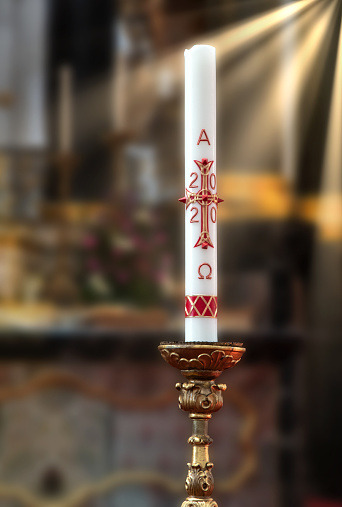
Saturday night sits at the hinge between the sorrows of the Passion and the hope that has sustained God’s people through generations. Easter Vigil includes the blessing of the Paschal Candle, an Easter fire, a celebration of Baptism (and sometimes several Baptisms!), and the very first proclamation of the resurrection in worship with shouts of Alleluia. We hear the resurrection story from the Gospel of John. (John 20:1-18)
Easter Morning

With shouts of “Christ is Risen!” echoed by the assembly “He is risen indeed, Alleluia!”, Easter morning tells the story of the resurrection through the lens of the year’s Gospel. This year we will hear the testimony from Mark (Mark 16:1-8) with the command to go forth into the place where mission begins to find the Risen One.
Easter Evening

Sunday night is set aside for the reading and reflection on the story of two disciples walking home to Emmaus after learning of the death and burial of Jesus. This story from Luke 24:13-49 is a powerful reminder of the places where we can encounter the living Christ, even now: in sacred story, in caring for one another, and in the breaking of bread as we remember Jesus.
Easter 2

The second Sunday in Easter tells the story of the Apostle Thomas (John 20:19-31) and his longing to see the wounds and scars that Jesus bore so he could trust in the resurrection. Jesus celebrates faith, but is willing to let Thomas touch the scars to awaken such faith. The Apostle cries out, “My Lord and My God.”
Easter 3
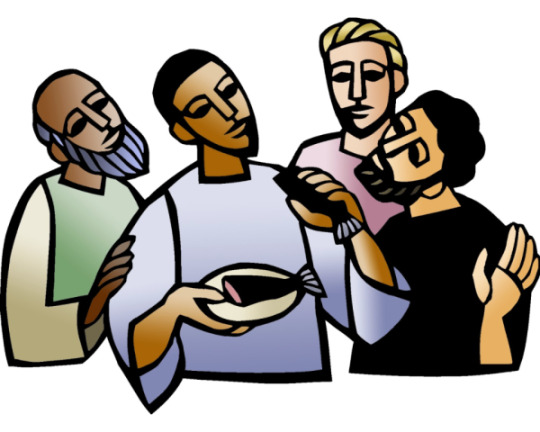
The third Sunday lifts up a story from Luke 24:36b-48 where the reality of the resurrection comes through the act of eating together. Jesus dines with friends, a hallmark of his earthly ministry and demonstrates that he has a real body, not a ghostly one.
Easter 4

Sometimes called Good Shepherd Sunday, this week always features some part of the Good Shepherd discourse from the Gospel of John. This year we’ll hear John 10:11-18 as Jesus describes the work of the Passion and Resurrection as the work of a loving shepherd protecting the flock from dangerous predators.
Easter 5

The fifth Sunday talks about our integration into the life of Christ. We are like the grafted branches that are added to a life-giving vine. The vine supplies the nutrients for growth and the branches blossom into fruitful yields.
Easter 6

The second to last Sunday brings us a story from John 15:9-17, which is a farewell discourse that Jesus originally delivers to his core disciples as he prepares for his death. Now we hear it as a preparation for the end of Eastertide, the departure of the resurrected body, and guide for how to be in the world as the embodiment of Christ.
Ascension Thursday
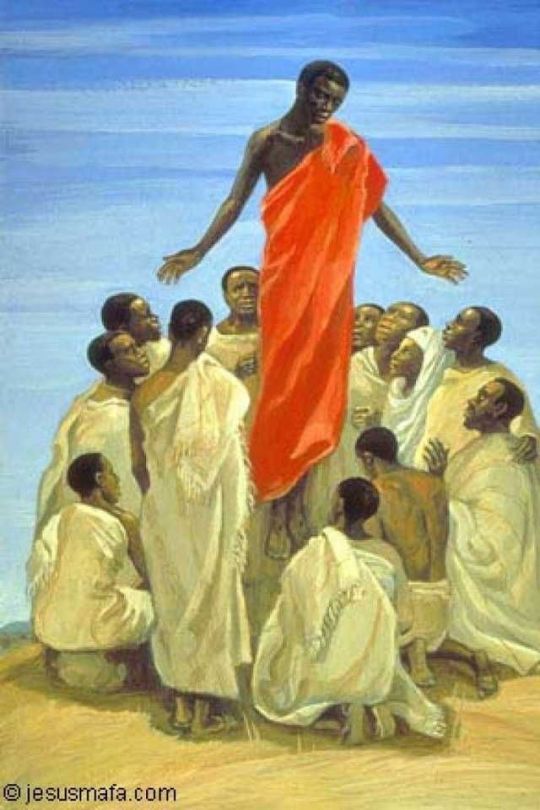
Forty days after Easter Sunday, we hear the story from Luke 24:44-53, where the witnesses of the Resurrection experience the departure of the physical presence of Christ in order to anticipate God’s presence in a new way. This departure left them in awe and wonder, but also in fear, since they weren’t yet sure how to be in the world without their beloved teacher.
Easter 7
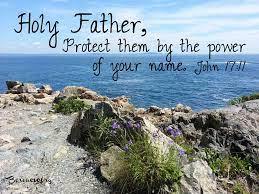
The final Sunday of Easter brings us back to the farewell discourse of John’s Gospel. Here In John 17:6-19, Jesus prays for the protection of God on this new community in it’s infancy. The new community will live in the created world, but not be controlled by the systems of power that dominate the world, and they will need divine wisdom and love to live in this in between space.
Vigil of Pentecost
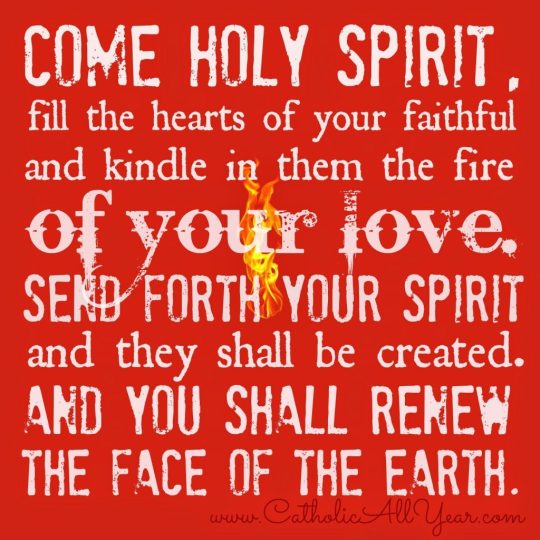
The Jewish celebration of Pentecost is a celebration of the first fruits of the harvest and also marks the 50th day after Passover, when the incredible gift of the Ten Commandments were received by Moses on Sinai.
Fifty days after Easter Sunday, we gather for a weekend of intense prayer and celebration. This evening worship is the third great Vigil or watchful waiting liturgy of the year after Christmas Eve and Easter Vigil. We gather in hope and longing that the God who drew near to us in Incarnation and Resurrection would draw near to us again in Indwelling through the gift of the Holy Spirit. We hear from John 7:37-39 how the Spirit is an ever-flowing stream that continually brings us to life.
Pentecost Sunday

On this feast day, we hear of the gift of the Holy Spirit and the energetic emergence of the Church. People are given gifts of speaking and listening, and the power of God is present in the whole body- every age, every ethnicity, every gender. We hear Jesus describing the work of the Spirit in John 15:26-27; 16:4b-15 and read the Pentecost story from Acts 2:1-21. The colors of fire remind us that the Spirit’s energy is always with us and within us, day and night, in our waking and in our dreams. This holy day also marks the transition out of Eastertide and back to Ordinary time through the rest of the year until Advent in the Fall.
1 note
·
View note
Note
Hey Krissy! I have a theological question, & you're a pastor, so I thought I would ask you. I was listening to a podcast about the role of hope in religion, & the scholars discussing it said there's a tension between faith & hope because faith inherently means certainty about God. Hope means you're NOT certain about God, so having hope about God or the afterlife or whatever means you don't really have faith. I never thought faith = certainty or that hope cheapened faith in God. Your thoughts?
Hey LBK, I'm on your side on this one. Faith is not certainty, faith is believing when there is no evidence or when the evidence seems to be against God. If I just look at the works of those Christians who are certain, I would have no reason or desire to be Christian. Certainty is dangerous, you want fundamentalist extremists and prosperity gospel, be certain...
If Hope was a bad thing we wouldn't have an advent candle named for it. Hope is born of faith, hope is the light that shines in the darkness and the darkness cannot put it out.
In Mark 9, right after the Transfiguration, Jesus, Peter, James, and John join back up with the rest of the disciples and they are in the middle of a crowd and arguing with the law teachers. Jesus asks, 'what's up boys?' And a man from the crowd answers that his son has got a demon that throws him down and makes him foam at the mouth (sounds like epilepsy) and the disciples couldn't heal him. Now here's where it gets interesting for us: "21 Jesus asked the father, “How long has this been happening to him?” And he said, “From childhood. 22 It has often cast him into the fire and into the water, to destroy him; but if you are able to do anything, have pity on us and help us.” 23 Jesus said to him, “If you are able!—All things can be done for the one who believes.” 24 Immediately the father of the child cried out, “I believe; help my unbelief!” 25 When Jesus saw that a crowd came running together, he rebuked the unclean spirit, saying to it, “You spirit that keeps this boy from speaking and hearing, I command you, come out of him, and never enter him again!” "
The father is NOT CERTAIN, but Jesus doesn't scold him or tell him to have more faith, he heals the kid. This is a prayer, "I believe, help my unbelief." that keeps many clergy going when people in the church are being shitty, when the powers of the world are oppressing and even killing the people they serve...
In 1 Corinthians 13 Paul writes, "And now faith, hope, and love abide, these three; and the greatest of these is love."
I don't know who you were listening to, but I think they need to have another look at both scripture and the Christian tradition, there are even lines in liturgy about 'the hope for things unseen'... in the end, in a world where even those who loudly proclaim themselves Christians don't practice justice, mercy, and forgiveness; where victims are blamed and shamed, all we have is faith in God and hope for and through the promises Jesus offered.
Thanks for the great question!!
Peace and hugs,
Krissy
#ask#answered#faith#hope#certainty#religion#christianity#progressive christianity#scripture#tradition#reason#mark 9#1 corinthians 13
21 notes
·
View notes
Note
don’t steal magic and memories from your little children- these are things they can never get back Don’t be a grinch, let them have a real Christmas with Santa and all that good ol’ holiday stuff (Better see the waster bunny this year too)
The Easter bunny we definitely don’t do because it doesn’t fit into our Easter celebrations at all. They don’t get individual Easter baskets and we don’t hide the eggs they’re bright red for crying out loud. I frequently forget the Easter bunny is a thing, and am genuinely confused for a second when I walk into stores and see bunnies everywhere, especially when Pascha might not be for another four weeks. No. No Easter bunny, that’s not even on the radar. But our kids wake up on St. Lucia day and see their mother wearing a crown of candles and we sing the St. Lucia song as we eat Lussekatter. We all go together to buy a real tree on the Feast of St. Herman of Spruce Island. They hang up handmade stockings on December 18th to find St. Nicholas has filled them, and we go to Liturgy and then have chocolate for breakfast and have speculaas all day. They hear stories from our Jesse tree book and hang ornaments on our Jesse tree. They see us read from the Scriptures by candlelight and the Advent wreath glow brighter and brighter as we get closer to Christmas. We read Christmas stories together under blankets all December. Every Monday (my day off) we have pancakes together and watch a movie and in December they’ll see plenty of Christmas movies, even The Polar Express every Christmas Eve with Hot Chocolate. They get Christmas presents on Western Christmas at their Grandparents and on Nativity. The house gets blessed with Theophany water in January. We’re there for the burning of the badnjak every year. Just because someone doesn’t tell their kids Santa is really slipping down their (non existent in our case) chimney doesn’t mean they’re not making memories.
35 notes
·
View notes
Text

25th January >> (@ZenitEnglish) #PopeFrancis #Pope Francis Middle East: Holy Masses Thank #Pope Francis for his Support.
Middle East: Holy Masses Thank Pope Francis for his Support
Candles for Peace in Syria
JANUARY 26, 2019 00:20ZENIT STAFFSPIRITUALITY & PRAYER
More than 1000 Holy Masses have been celebrated by Catholic communities in the Middle East in order to thank Pope Francis for his participation in the Advent initiative Candles for Peace in Syria, which was organized by the international Catholic pastoral charity and pontifical foundation Aid to the Church in Need (ACN International). On the first Sunday of Advent last year, during the Angelus prayer at the window of the Apostolic Palace, Pope Francis lit a candle and prayed that “this flame of hope and many little flames might scatter the shadows of war”.
Also participating in the Candles for Peace in Syria campaign, were over 50,000 children of different religious faiths and denominations in many of the major war-torn cities of Syria, such as Aleppo, Damascus, Homs, Marmarita, al-Hasaka, Tartus and Latakia. And thousands of people worldwide also associated themselves with the campaign and expressed their solidarity and concern for the people of Syria.
On January 1, 2019, the World Day of Prayer for Peace, at the initiative of Melkite Catholic Archbishop Issam John Darwich of Zahleh and Forzol, hundreds of parishes in Lebanon also associated themselves with the campaign, lighting candles at their New Year‘s Day Liturgies and praying for peace in Syria and throughout the Middle East.
JANUARY 26, 2019 00:20SPIRITUALITY & PRAYER
1 note
·
View note
Text
Advent Candle-Lighting Prayer Songs
Advent prayers set to singable melodies
With lyrics from the Advent liturgy of Common Worship (Times & Seasons) these prayers for each week of Advent combine beautiful, liturgical prayers with fresh, new melodies that are easy for a congregation to sing along with. Perfect for singing while the Advent candle is being lit at church or home.
The musical settings are by David Frincke, co-founder of United Adoration.
Here’s the prayer song for Week 1:
youtube
+++
Get lead sheets, mp3s, videos, lyrics and more at https://www.unitedadoration.com/advent-wreath-prayers-week-1/
The song for Week 2:
youtube
+++

+++
Fr more creative ideas ...
Advent Candle Liturgy by Rev. Emma Morgan (Australia) https://godspacelight.com/2015/11/19/advent-candle-liturgy-emma-morgan/
1 note
·
View note